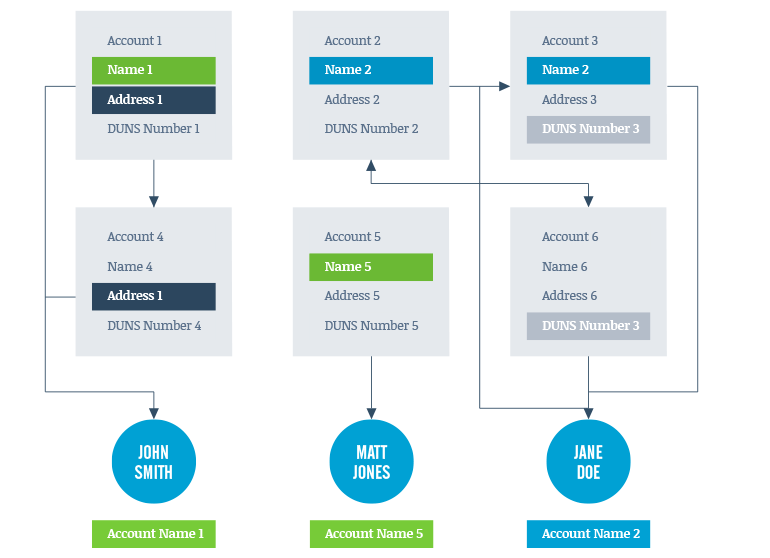If you’ve attended any industry events recently you will have undoubtedly heard the term “Account Based Marketing” about a bagillion times.
It is one buzz word in B2B marketing right now, along with “Predictive Analytics” and “Channel Enablement.” This idea of defining a set of accounts to target, and using insight garnered on those accounts to target the buying committees intelligently within them is not new. “Targeted account lists,” “key account marketing,” and other terms were used for it in the past, and organizations like ITSMA have been developing methodologies around it for years, long before SiriusDecisions came onto the scene.
The difference now is technology vendors actually have products to address ABM. Predictive analytics allows you to uncover new target accounts. Web personalization allows you to target content to specific accounts. Programmatic advertising allows you to retarget accounts. There are account-based scoring solutions now, and many other offerings. 70% of B2B organizations are planning to, or are already, implementing account-based marketing programs (SiriusDecision’s 2016 State of ABM Survey).
And why not? It makes perfect sense to focus scarce sales resource on accounts that have all the characteristics of your ideal customer – right size, right industry, right position in the market… Hungry field sales reps are always keen to uncover new logos that match their target criteria and are just aching for an opportunity to get their foot in the door. That is where Marketing comes in.
One catch – at the end of the day, you are not just targeting by vertical or industry segment, you are still targeting ideal customer people.
The need for 1-to-1 marketing has not gone away. No, the bar has simply been raised yet higher. Now not only should your content reflect an individual’s job function and their role and stage in the buying process, but if you are really going to do this account based marketing thing well, it should address the challenges of companies in a specific sector, or even the unique position of their company within the market.
Sounds like a lot of work.
So how do you do this in practice?
In this post I’ll outline efforts necessary to define, identify, and market to your target accounts, or target account types. The critical first step is that of aligning your data. In future posts we’ll go more deeply into the other efforts we touch on here, such as persona development, account profiling, and the development of messaging and content.
Before you do anything else, get your account and contact data in order! And create a mechanism to keep it order. You will be limited in your ability to identify and effectively communicate to the right contacts at the right accounts at the right time if you cannot properly associate those contacts back to their accounts and all the data that sits at the account level in your marketing automation platform. You can accomplish this in a few ways – within Marketing Automation, within CRM, or independent of these two systems, within a data engineering platform. Marketing Automation would be my last choice, as it is clunky at best. CRM will get the job done, but if you have multiple systems outside of these two containing contact and or account data on prospects, the data platform is the way to go.
In the diagram below, you can see how by matching on variables aside from Account Name, it’s possible to discover multiple accounts in your database that are in fact duplicates.

In this example, contacts are actually related to several of the account records in your database, although you likely only have them connected to one. Without merging accounts and ensuring the account/contact relationships are represented correctly in your database, you will perpetuate a disjointed scenario where contact activity associated to the account is tracked across multiple account records, as well as creating potentially conflicting account data.
By merging based on multiple criteria, it’s possible to clean up a prospect database while also ensuring that contacts are associated to accounts that have as complete a set of information and event tracking as possible.
You can then enable systems outside of CRM and marketing automation – social media management tools, Data Management Platforms (DMPs), website personalization engines – to link to accounts by applying unique identifiers. This allows you to co-ordinate data-driven marketing activity to accounts that are joined, even if they are maintained in separate systems. Note, this can only be done easily with the data platform approach.
Do not forget to offer your Sales reps a means to merge accounts themselves from within your CRM. This should be part of the defined process for your reps when they convert leads. Many CRM solutions, notably Salesforce.com, offer a Merge tool that allows you to merge both duplicate accounts and leads. Along with your Sales Operations team, you should determine whether or not enabling this function for your Sales team will have any negative impacts on your data structure or processes before enabling.
Mining the data for insight
Now that you have your accounts merged and contacts linked up appropriately, you should be able to mine your data. How many of your target accounts do you have in your database today and how many contacts? Which accounts and contacts share the same characteristics? Which contacts are responding to campaigns and content? What content are they engaging with and when?
Getting to know your target accounts cannot just be an automated, quantitative process. You have got to get your hands dirty. Find those folks on social media. Who do they follow? What types of content do they readily share and comment on? Even better, conduct a profiling exercise to probe for burning topics and issues within the business. Understanding the current situation is invaluable when trying to produce content and communications that will disrupt and challenge the status quo.
If you have the means, consider a 3rd party data provider to help you learn more about your target accounts. Some predictive analytics vendors are beginning to expose the data they use, or there are data providers that specialize in specific geographies or industries that can be of assistance. For more insight on data sources, check out this recent post.
Enriching and mining your data and answering the questions above should help you to identify your key buyer personas – archetypes common across all target accounts that share a similar roles, motivations, buying triggers and barriers. Recognize that you cannot boil the ocean, so start by identifying one or at most two personas that are present in your database today – ones that it is possible to identify and target, who are likely to respond. You can then combine the account profiles generated with your buyer personas to inform the development of highly relevant, breakthrough messaging and content for your ABM programs.
Of course, not all of the marketing efforts will be through direct channels to addressable database segments. Just as much, if not more effort will have to go into Sales or Channel Enablement, depending on your company’s sales model. If your business has chosen to pursue any but the Industry/Segment type of ABM per SiriusDecisions’ four ABM types, the Sales reps likely already have a relationship with these prospects. Even if they do not, ABM demands a high-touch approach to the sales cycle, so Sales will get involved early in the buying process. At least some of the content designed to assist in moving the prospect along will be delivered by the Sales rep. This interplay between digital and human channels makes it all the more important that systems and data are aligned to ensure a single, seamless dialogue – rather than a series of fractured conversations.
This is not meant to be taken as an exhaustive list of how to blend ABM and 1-to-1 marketing approaches, but it will hopefully help you begin to think about how you might go about this within your own systems and teams.
Just remember – at the end of the day you are still selling to unique individuals. Account Based Marketing only amplifies the need to know our buyers inside and out, and to speak to them in a targeted, intelligent way. It means working with an even more finite segment, allowing for even greater depth and relevance of content. Starting small and knowing your data will allow you to make intelligent decisions, enabling you to test and learn before launching an all-out ABM practice within your business.


